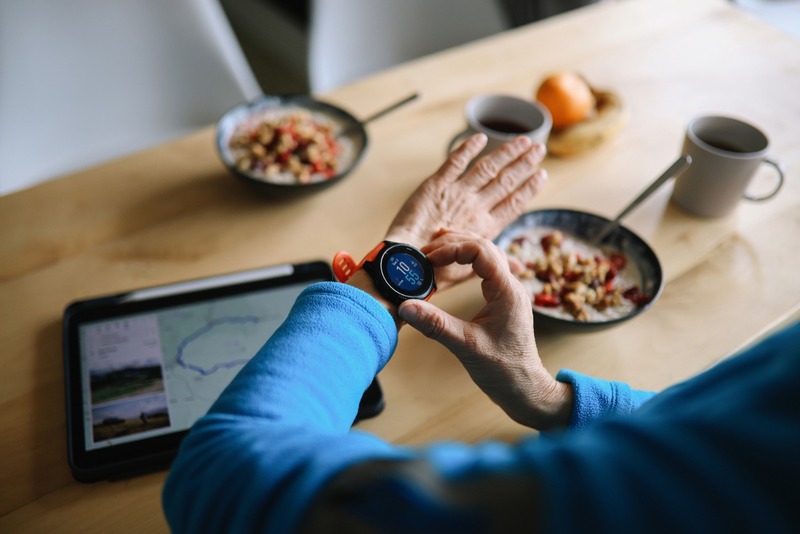News
Vail Health: Screening For Small Cancers
When found early breast cancer isn't a death sentence.
The Shaw Regional Cancer Center recently acquired new technology called a SonoCine machine that it hopes will help find breast cancer earlier when the cancer is smaller and more easily treated.
The SonoCine is an automated whole breast ultrasound (AWBU) that detects small cancers. While a mammogram uses X-rays to detect cancers the SonoCine uses sound waves. The SonoCine differs from the mammogram in that it is designed to pick up cancer in women with dense breasts. Dense breast tissue can appear white on a mammogram. Cancer also shows up as white which makes detecting breast cancer in women with dense breasts a challenge.
"As a woman ages her breast tissue is replaced with fat. Women with dense breasts and that tends to be younger women it's more difficult to examine their breasts and see problems on the mammogram" said Peggy Carey vice president of oncology at the Shaw Cancer Center.
This new technology which doesn't have any risks associated with it helps doctors detect breast cancer at an earlier stage which is crucial to surviving the disease.
"Early detection is the key" said Dr. Janice Ugale medical director at the Sonnenalp Breast Center. "If we can find a breast cancer that's stage zero which means that it's not something that you can feel in the breast and find it on the mammogram then the five-year survival rate is going to be 97 percent or higher which is close to 100 percent. If we find breast cancer in one of the other stages the five-year survival rate is going to be a lot less. With this new screening ultrasound we'll find small cancers that we can't see on mammography."
'Practice secondary prevention'
Breast cancer amounts to 44 percent of the cancer cases treated at the Shaw Center. Women under the age of 50 make up 38 percent of the breast cancers diagnosed at Shaw. While many factors contribute to the cause of breast cancer the direct origin of the disease is still unknown.
"We know that genetics plays a role" Carey said. "We know that there are environmental factors. Estrogen has an influence. With lung cancer we know that if you don't smoke cigarettes don't chew tobacco don't drink in excess if you aren't exposed to environmental toxins your likelihood of getting lung cancer is low. With breast cancer there's no primary cause and effect. That's why we practice secondary prevention such as screenings because our best approach is to detect it at its earliest most curable stage."
The SonoCine is not a substitute for the mammogram. Mammography is still effective in detecting breast cancers for the majority of women.
"We're recommending that women over the age of 40 have an annual screening mammogram and then supplement with whole breast ultrasound" said Colleen Berga breast imaging coordinator at the Sonnenalp Breast Center. "The SonoCine is an adjunct to mammography not a replacement."
Berga suggests that when getting a mammogram women inquire about their breast density. If the mammogram reveals that a woman has dense breasts then she can opt for a more thorough screening using the SonoCine.
The SonoCine is not used for women whose breast cancer shows up on a mammogram.
'Peace of mind'
Vail resident Jan Smith 60 recently had a SonoCine ultrasound. Previous mammograms revealed that she had dense breasts. Smith asked to have the procedure as an extra health and safety precaution.
"I have a family history of breast cancer" she said. "A cousin of mine was recently diagnosed with it. I've had two other cousins diagnosed with it as well but they survived. I've always had healthy mammograms. Honestly it's a peace of mind. You can't put a price on your health. As long as these things are available to us we should use them."
Smith said the ultrasound "didn't hurt at all" and took about 30 minutes.
Because the SonoCine machine is a new technology it is not yet covered by insurance plans. Carey said that the Shaw Center is offering the screening for $300 which "cost-only." It's on special during October for $265.
"Right now there are no codes built to charge to your insurance. In the near future we're hoping that they will see that it is a valid source of breast imaging and those codes will be created. It did take about 10 years to create the codes for mammography so it's definitely a work in progress" Berga said.
Since it's not being covered by insurance Ugale isn't making "blanket recommendations" to her patients quite yet she said. She only recommends it for patients who are at high risk and have dense breasts.
Pros and cons
The American Cancer Society the Society of Breast Imaging and the American College of Radiology have yet to endorse the SonoCine ultrasound Ugale said. In a 2010 study published in the Korean Journal of Radiology researchers found sonography or ultrasound-based diagnostic imaging to be an appealing addition to mammography because of its low cost few risks and the fact that its equipment is more widely available compared to breast MRI.
The study also pointed out the cons related to sonography such as the shortage of skilled technicians significantly higher false-positive rates compared to mammography and the inability of sonography to detect microcalcifications (tiny specs of calcium deposits certain clusters of which could be cancerous).
"Further study of screening sonography is still ongoing and is expected to help establish the role of screening sonography" the researchers concluded.
Ugale thinks there is enough research pointing to the benefits of AWBU machines.
By using the SonoCine "there is definite data that shows we can find 50-percent more breast cancers in women with dense breasts at an early stage" Ugale said.
In a 2010 study published in the journal of European Radiology breast cancer detection doubled from 23 to 46 in 6425 studies using AWBU with mammography in women with dense breasts and/or with an elevated risk of breast cancer. The Shaw Center one of 20 facilities in the U.S. offering the technology has been using the SonoCine since June. They have yet to find any small cancers in their patients using the machine.
The Shaw Center decided to purchase the SonoCine which cost almost $200000 because it was less expensive than other AWBU machines on the market.
"We felt that we wanted to offer our patients a screening ultrasound program" Ugale said. "We wanted to try this and see what this will show us and how much. We felt it was a good addition to what we could offer."
Those in favor of SonoCine believe that the machine will locate smaller cancers earlier in women with dense breasts and could save women's lives. With such a new technology only time will tell if the screenings substantially impact breast cancer survival rates.
Myths vs. facts
1. Myth: Women with less body fat and more muscle mass have denser breasts.
Fact: Age and genetics are the primary determining factors of breast density not weight. Women with dense breasts tend to be younger (pre-menopausal).
2. Myth: Women with smaller breasts have denser breasts.
Fact: While women with larger breasts may be harder to examine having larger breasts doesn't decrease their density and vice versa.
3. Myth: Having dense breasts increases your risk for breast cancer.
Fact: Breast cancer is harder to find in dense breasts. The greatest risk for breast cancer is age.
4. Myth: Breast cancer is preventable with a healthy diet and exercise.
Fact: While there are some known factors that may contribute to breast cancer (genetics estrogen environmental toxins) there is no known direct cause.
5. Myth: Automated whole breast ultrasound technology (SonoCine) is expected to replace the mammogram in the future.
Fact: "The mammogram is the gold standard for detecting breast cancer and determines breast density" Dr. Ugale said. "It is much more effective in finding small cancers in women with fatty (non-dense) breasts than in those with dense breasts."
Get Pretty in Pink
This month in honor of Breast Cancer Awareness Month more than 20 local spas salons and other businesses are participating in a fundraiser called "Get Pretty in Pink" to raise funds for the Shaw Regional Cancer Center.
Currently the SonoCine diagnostic test is $300 and most insurance plans do not cover the procedure. During the month of October it will cost $265. The proceeds raised this month will benefit the Shaw Regional Cancer Center the proceeds will go into a fund for underinsured or uninsured women. Visit www.shawcancercenter.com/getprettyinpink or www.facebook.com/vailmedical for more information.
More News
-
New!
More

First Chair to Last Call: What Does Alcohol Really Mean For Your Health?
In nearly every Colorado ski town, some iteration of the neon sign blares its play-hard-party-harder anthem. It’s a not-so-subtle nod to mountain party culture, a lifestyle that normalizes combining sports and outdoor adventures with heavy drinking and partying. In Eagle County, après culture, high-altitude living and outdoor performance have coexisted for as long as locals have been sliding on snow. But how much is too much at altitude? And what role do social support systems play in helping residents find balance?
-
New!
More

Counting More Than Steps: How Wearables Can Help (or Hinder) Your Health
From step counts to sleep stages, heart rate variability to blood sugar spikes, wearable devices are giving us a front-row seat to what’s happening inside our bodies. Strapped to wrists, slipped onto fingers or wrapped around our biceps, wearables like the Oura Ring or Whoop strap promise insight and advice in the quest for better health.
-
More

Cass Barham and Sarah Crabtree Honored As Recipients of Vail Health Elevate Award
Cass Barham and Sarah Crabtree, both lab techs at Vail Health Hospital, have been named recipients of the Vail Health Elevate Award. Vail Health created the Elevate Award in June 2022 to give patients and their families an opportunity to nominate and thank employees who have touched their lives in some way.





